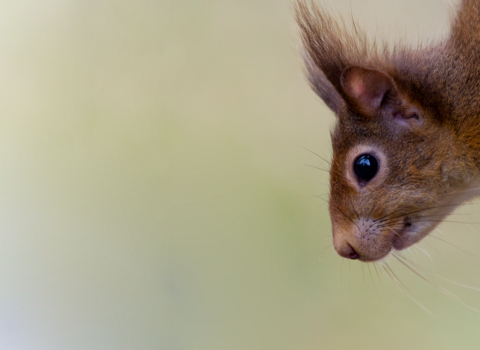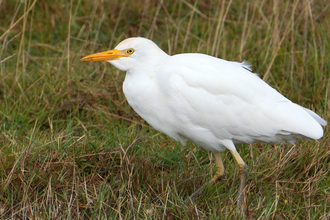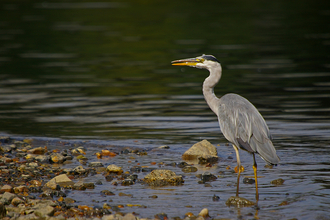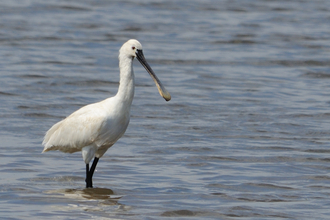
Glossy ibis © Nick Upton
Glossy ibis
This glossy wading bird is a scarce visitor to the UK, though records have become more common in recent decades.
Scientific name
Plegadis falcinellusWhen to see
Recorded in all months in the UK, with most sightings in autumnSpecies information
Category
Statistics
Length: 55-65cmWingspan: 88-105cm
Weight: 630g
Conservation status
Classed as Least Concern by the IUCN
Habitats
About
The glossy ibis is a heron-like bird with a long, curving beak. They breed in parts of southern and southeast Europe and are occasional visitors to the UK. However, in recent decades sightings here have become more common, mirroring an increase in their breeding population in southwest Europe. Glossy ibises made a couple of breeding attempts in England in 2014 and 2016, with the first confirmed successful nest in 2022. It's predicted that breeding may become more common as climate change results in drier summers in southwest Europe and milder winters in the UK.Most glossy ibises arrive in autumn, occasionally staying through the winter, though they could be seen in any month. It's often young birds that turn up here, sometimes just months after leaving the nest. Bird ringing projects have allowed us to see where some of these visiting ibises have travelled from, as they're fitted with a ring on their leg that allows birdwatchers to identify individual birds and trace their origins. Most of the ringed birds that have been spotted here were given their identifying rings as nestlings in Doñana in southwest Spain, though a few have been young birds from the Petite Camargue in the south of France.
Glossy ibises are usually found in wetlands or damp fields, using their long bill to probe the mud for food. They have a varied diet, mostly feeding on invertebrates like water beetles and dragonfly larvae, but occasionally eating newts, frogs, lizards, and other vertebrates. Their bills have special sensory organs in the tip that can detect pressure and vibrations, allowing them to find food buried in the mud.




